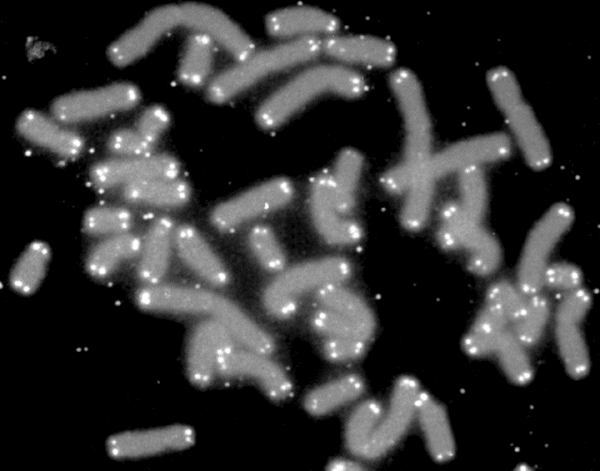Exercise May Protect Your Telomeres

Certain exercise appears to increase transcription of telomeres into telomeric repeat–containing RNA (TERRA), which may protect telomere length
Telomeres can be lengthened by the enzyme telomerase in specific cell types, but the rate of shortening as we age also appears to be affected by multiple additional factors such as stress exposure. Telomeres themselves were once believed to be transcriptionally silent, but new research has discovered that they can be transcribed into something sequences called telomeric repeat–containing RNA (TERRA).
Telomere transcription
These TERRA sequences are still largely mysterious, and while there are theories that they may protect or even lengthen telomeres, we currently don't know. Curiously, researchers have confirmed that within telomeric sequences exists a binding site for the transcription factor nuclear respiratory factor 1 (NRF1). NRF is activated in response to lowered ATP levels, which are a consequence of exercise.

Exercise can increase telomere transcription
Observing 10 healthy individuals undergoing a low or high intensity, 45 minute workout, researchers took before and after samples to determine whether levels of these TERRA sequences increased as a response to exercise.
TERRA levels were increased 2.5 hours after both low and high intensity exercise, but more markedly following the high intensity variety. More importantly, levels were raised in both dividing and non-dividing cells. While telomere length is extremely important for healthy cellular division, we shouldn't discount the importance of telomere integrity in non-dividing cells too, which may also play an important role in the aging process.
“The novelty and merit of this work is that the authors demonstrate, for the first time, that [telomere transcription] occurs in response to physical exercise in a physiological system—human muscle”
What do TERRA sequences actually do?
The research team demonstrated that a regulator of mitochondrial metabolism, peroxisome proliferator–activated receptor g coactivator 1α (PGC-1α), kicks off NRF1 driven telomere transcription. Exactly what these transcribed sequences do however, is still to be determined. Exercise produces higher levels of ROS (reactive oxygen species), so one theory is that these sequences associated with and protect telomeres from damage. If this is truly the case, finding new regulators of TERRA transcription could be an additional way of protecting telomere integrity and length.
“The implications of this work could be major since TERRA is a potential therapeutic target to promote healthy aging”
Read more at The Scientist
From The Longevity Reporter: The Weekly Newsletter About Aging

Fascinating stuff. Love all to do with Telomeres and longevity research.
Best regards
The jury is still out on whether keeping telomeres longer is actually beneficial AFIK. Certainly adding additional telomerase doesn't extend cellular life time. Still, interesting stuff. The structure of the ends of the telomeres is also a fascinating case, one of the few times that DNA makes a quadruplex shape (4 strands) rather than the standard duplex.
telomeres were discover by a romanian